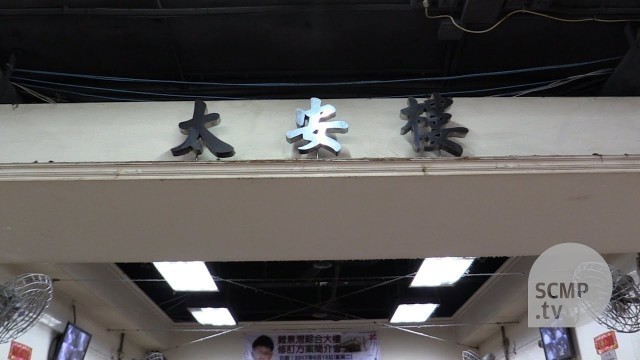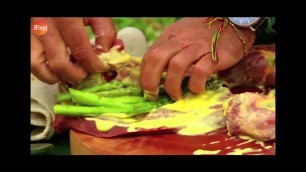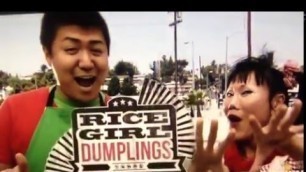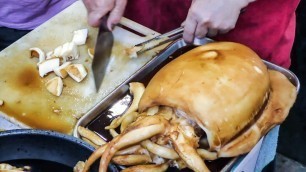

'It looks like so much of Hong Kong: crevices of dissonance and colour wedged tightly between soaring skyscrapers and dense tenements lit up by fluorescent signs and packed with hawkers and shoppers who mingle amid the scent of braised beef, curry fish balls and the omnipresent blanket of humidity. A beautiful cacophony. However, unlike its cousins, this 20,000 sq ft shopping arcade sits beneath a 28-storey building containing 1,884 flats. Tai On Building in Sai Wan Ho in eastern Hong Kong Island has stood as a landmark of the district since 1968. When first constructed, it was a high-rise waterfront development amid a sea of short dwellings. However, over time, the surrounding buildings grew upwards. Street-side dai pai dong became 7-Elevens and a screen of gleaming residential complexes now lines the harbour, which has moved hundreds of metres away from Tai On Building. Stepping through its entrances transports the visitor into a world of nostalgia. Small snack vendors, shoe repair stores, Chinese medicine shops and cha chaan teng line the halls. An array of traditional Hong Kong-style street snacks is available in the arcade. Cart noodles, egg waffles, dumplings and mango mochi have given Tai On Building its new status as a “foodie paradise”. Regardless of the hour, the dimly lit halls bustle with hungry locals. Peter Lai Chiu-hung, owner of Hung Kee Top Quality Egg Waffles, has operated in Tai On Building for nine years. “Tai On Building gave me a chance,” said Lai. “The people living upstairs bring steady business that lets me sustain my stall even when the weather dissuades outsiders from venturing into the building.” Renes Ng Ka-wai opened his restaurant, Siu Shing Chi Mei, in May. “I was attracted to Tai On Building because of the constant flow of people,” Ng said. “The culture within the building is very unique in Hong Kong today. The family nature makes me feel at home.” For many people, Chungking Mansions in Tsim Sha Tsui is a prime example of a building that serves as a microcosm of the community it conceals within. However, this “world inside a building” phenomenon is not unique. While there are an estimated 5,000 such “composite buildings” in the city, there are no more than a couple hundred structures that – like Tai On Building – have more than 15 storeys, said Dr Lee Ho-yin, associate professor and head of the division of architectural conservation at the University of Hong Kong. These self-sustaining “mini-communities” began sprouting up as part of a “distinctive vernacular typology” associated with the 1960s, University of Hong Kong adjunct professor Lynne DiStefano said. Composite buildings arose as the government’s method of supporting a swelling population and boosting the economy amid an influx of mainland Chinese immigrants in the wake of the second world war and the 1949 revolution. “The government allowed people to work and live in the same unit at the same time,” Lee said. “This means these buildings were not only self-sufficient communities, but mini-economic entities. Residents theoretically did not ever have to leave the building.” However, in 1966, concerns over hygiene and health prompted the government to order changes to the way property could be developed. By the early 1970s, developers stopped constructing composite buildings. “Self-sustaining communities like Tai On Building and Chungking Mansions are a phenomenon unique to Hong Kong,” Lee added. “They were a temporary solution created to deal with a specific problem at a certain moment of Hong Kong’s history. “In today’s Hong Kong, places like this, where whole communities live within a building and have a genuine culture of connectedness are rare,” restaurant operator Renes Ng said. “They are being replaced with megamalls and new housing developments.” While developers continue to rebuild the city’s skyline, nostalgia for icons of old Hong Kong could stop the demise of relics like Tai On Building. “For a long while, I think outside people neglected the stores downstairs. Serving only the residents of the building was not enough to sustain business,” resident Yeung Ling-ka said. “Then a few years ago, business picked up again. I think the internet helped a lot with raising awareness. A lot of the newcomers are young people and tourists.” The Sai Wan Ho landmark continues to attract attention for its unique architecture and delectable snacks. Perhaps this way, Tai On Building serves as a sign that such structures can be protected. “It is a phenomenon that is worth maintaining,” Lee said. “This architecture is something really local. The 1960s composite buildings against the backdrop of high-rise towers and mega architecture are unique in the world.”'
Tags: China , News , video , morning , post , south , scmp , hong kong street food
See also:













!['King Crimson - Cat Food (Single Version) [Bonus Track]'](https://cdn-img01.food2blog.com/images/44-m/143/1433250_m.jpg)



comments